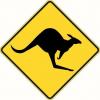
Originally Posted by
Derek Cohen

Regarding the ramped board ...
I had a close look today. The ramp does work against the skew, however we are talking 4 degrees here, and the blade is skewed 20 degrees.
I would conclude that the ramped shooting board is to be used with a straight bladed plane, where it will reduce the jarring on impact. The skewed blade of the #51-type (LV and LN) will work best on a flat shooting board.
Regards from Perth
Derek
Do you think a reverse-ramped board (where the raise is in the back as opposed to the front) would help any with a LV/LN skewed blade? Any clue where the magical "the gains are minimal" point is?
Just curious here. . .
The Barefoot Woodworker.
Fueled by leather, chrome, and thunder.





 Reply With Quote
Reply With Quote








